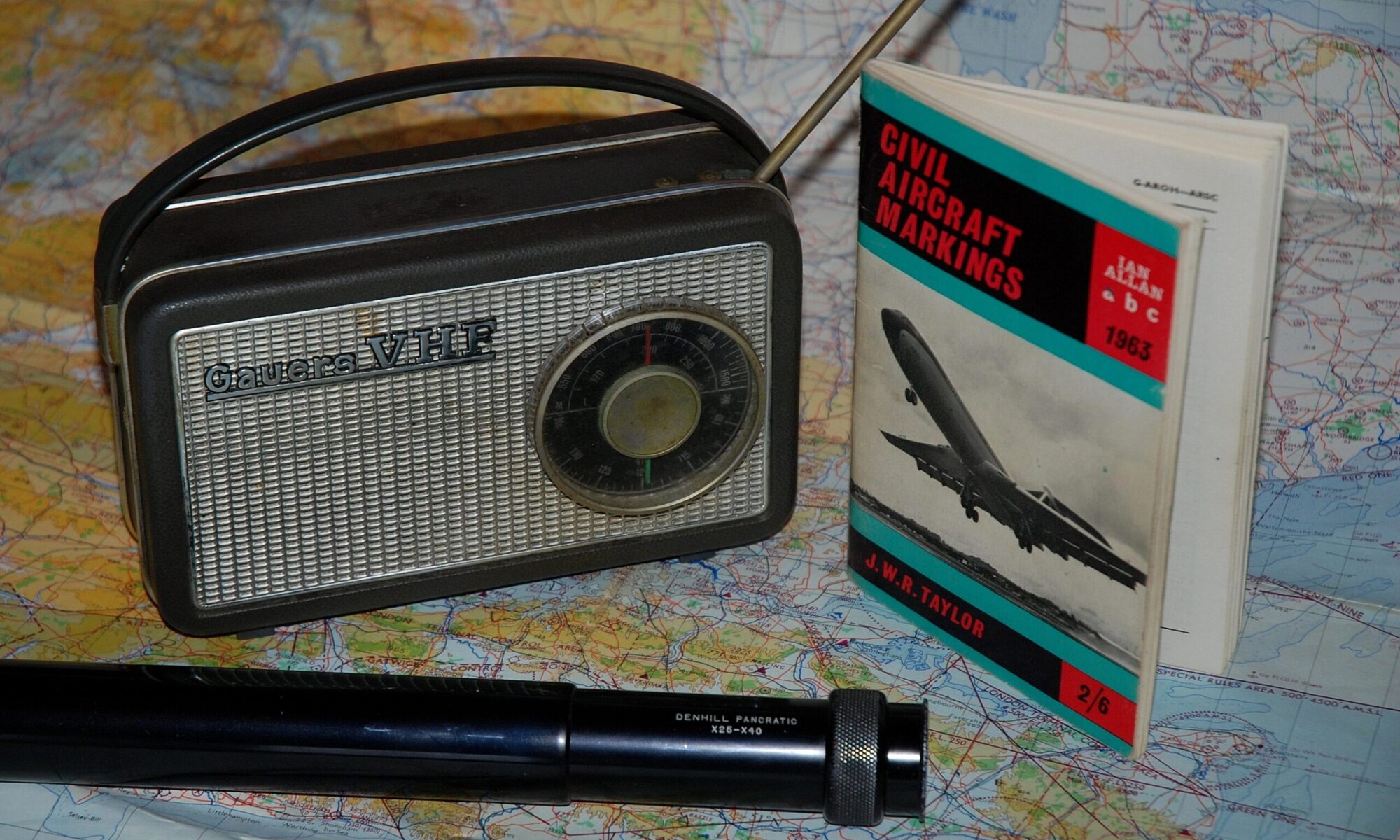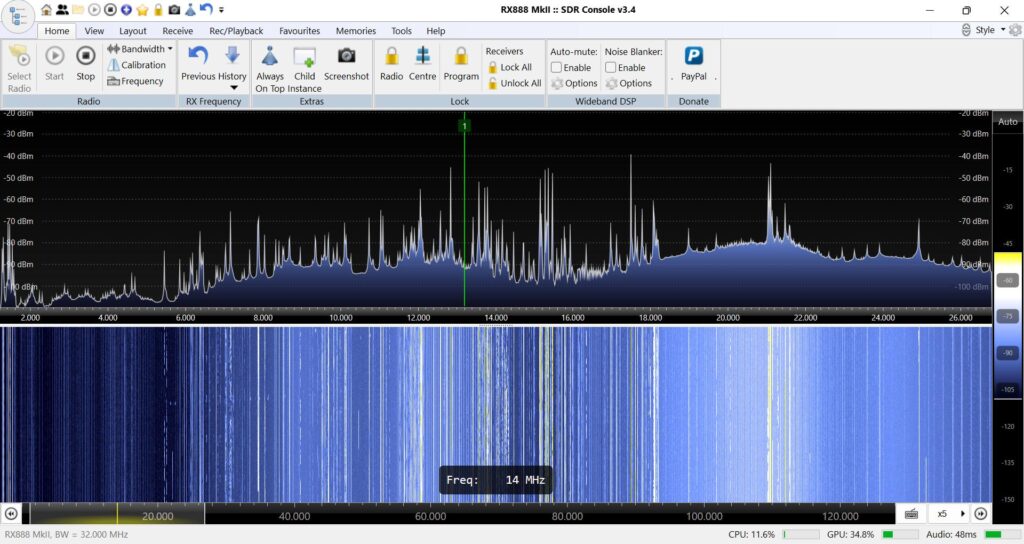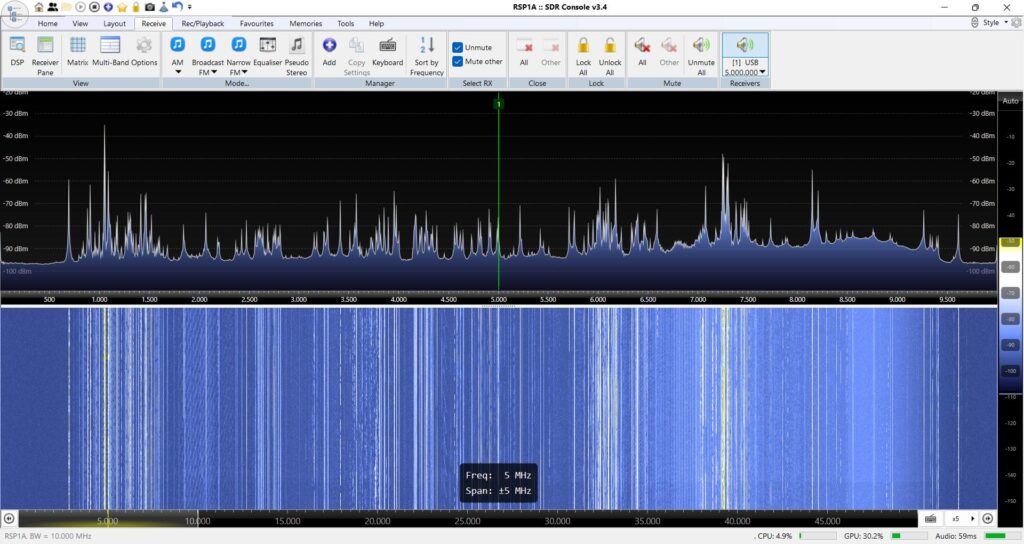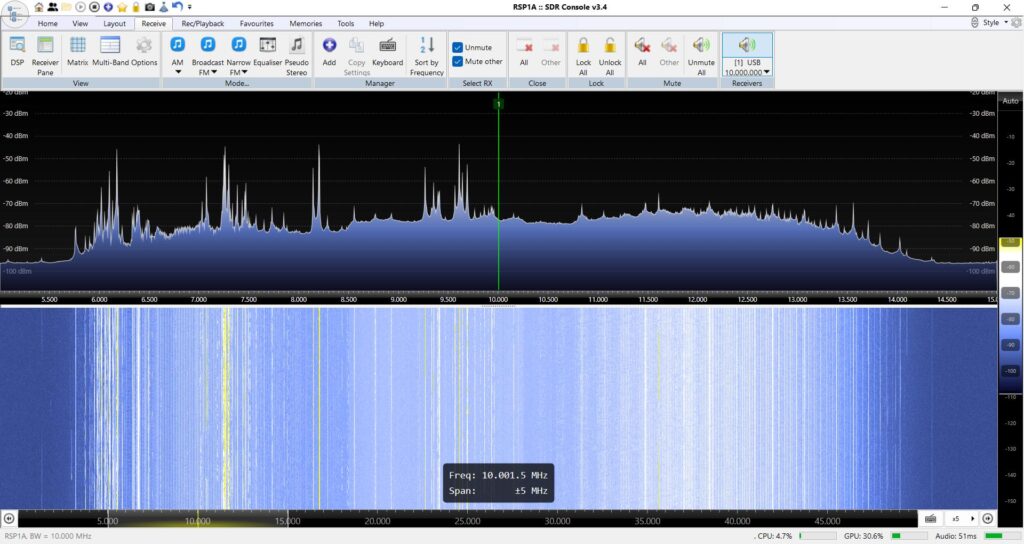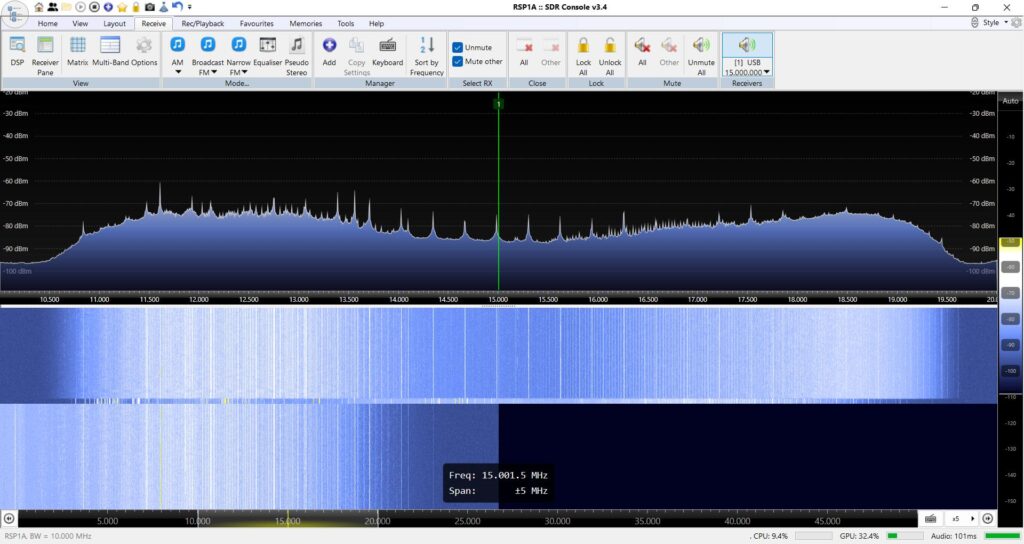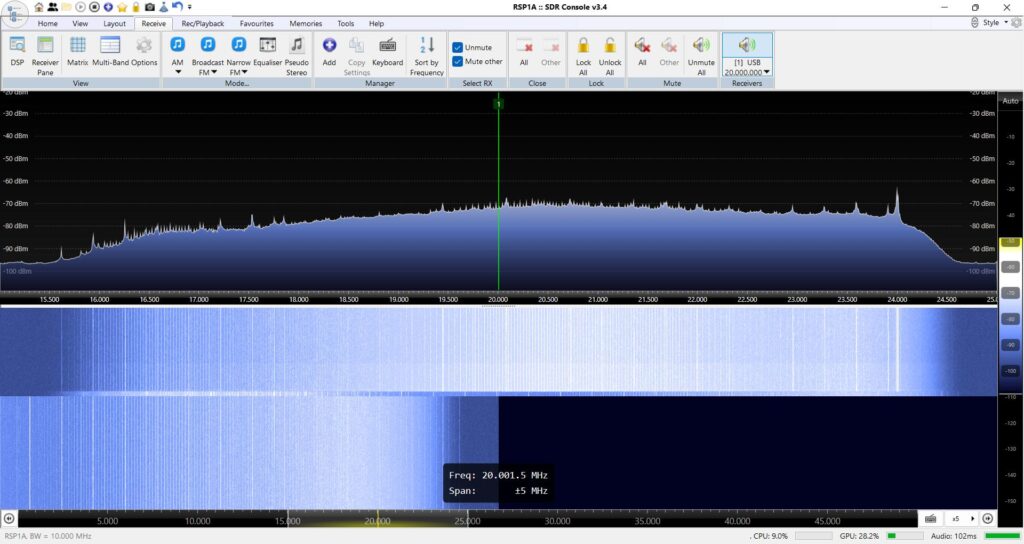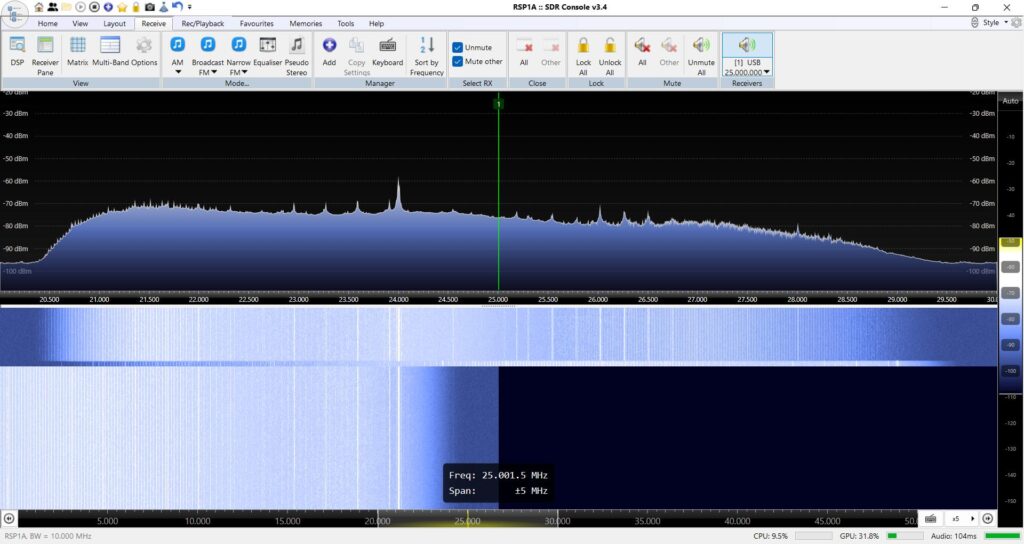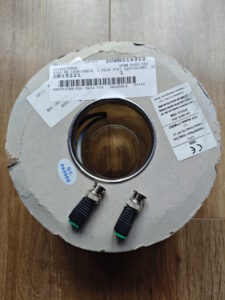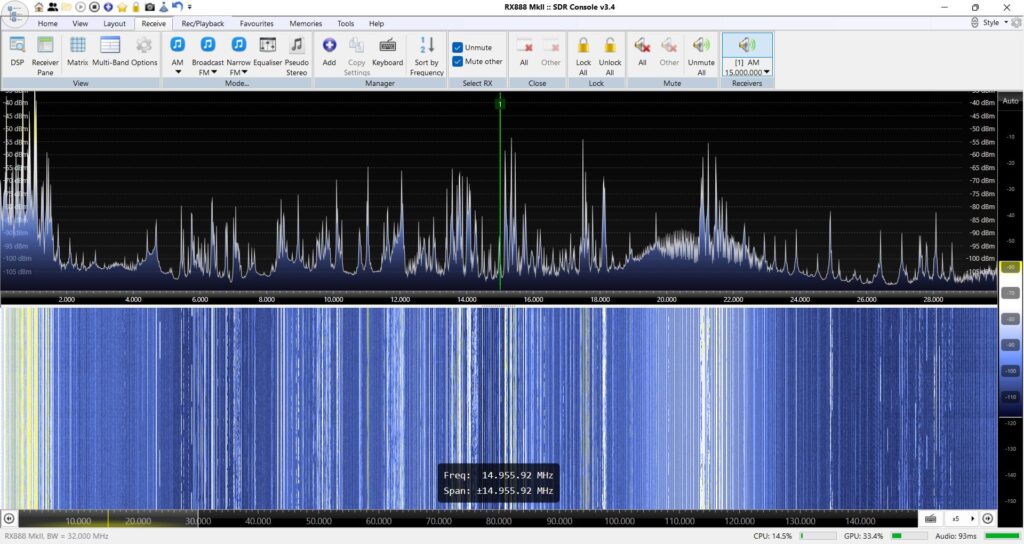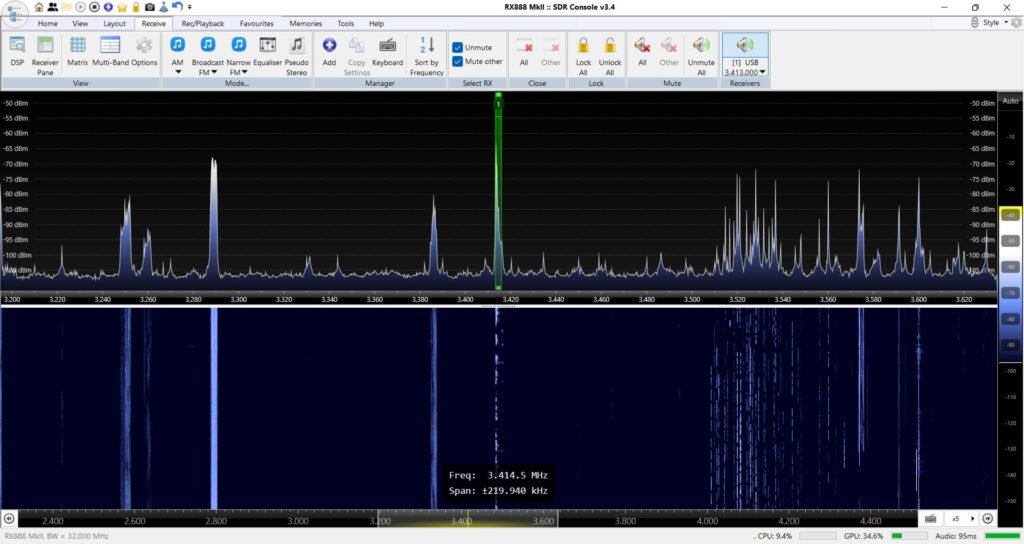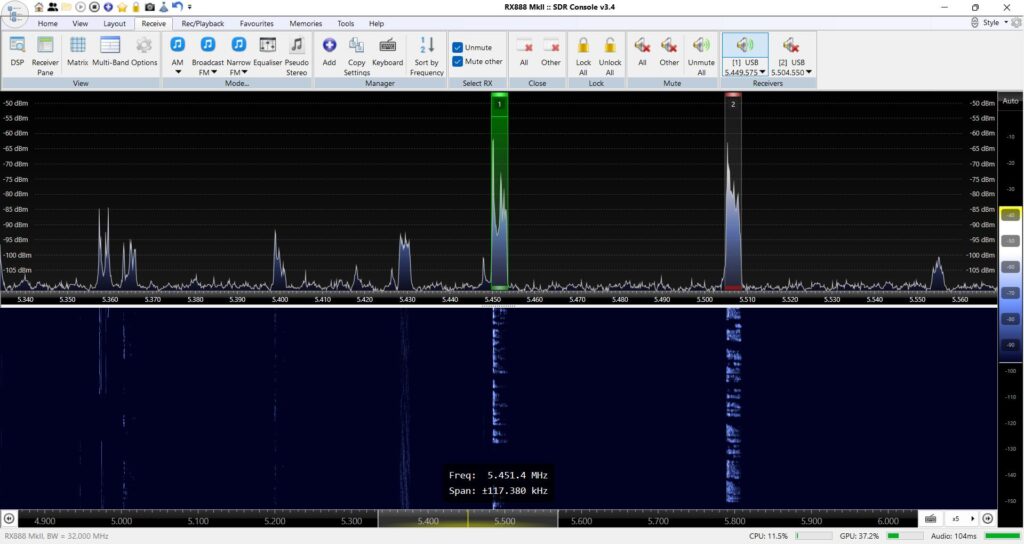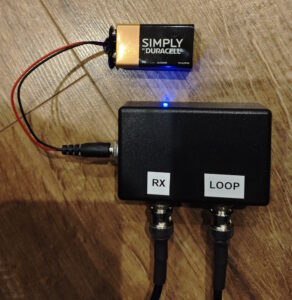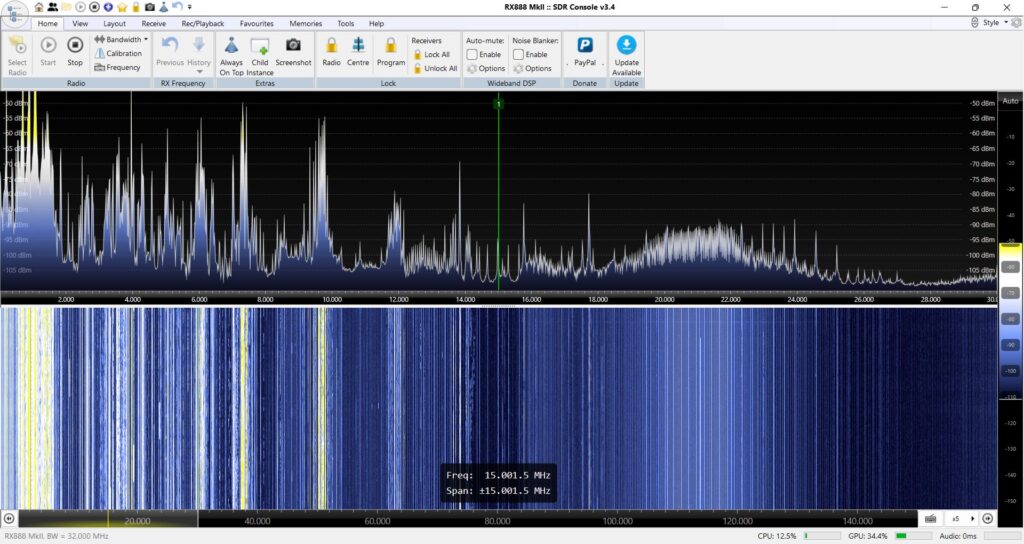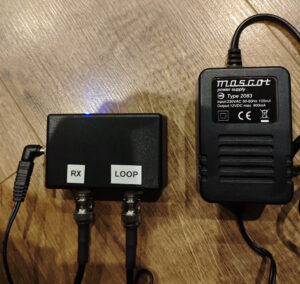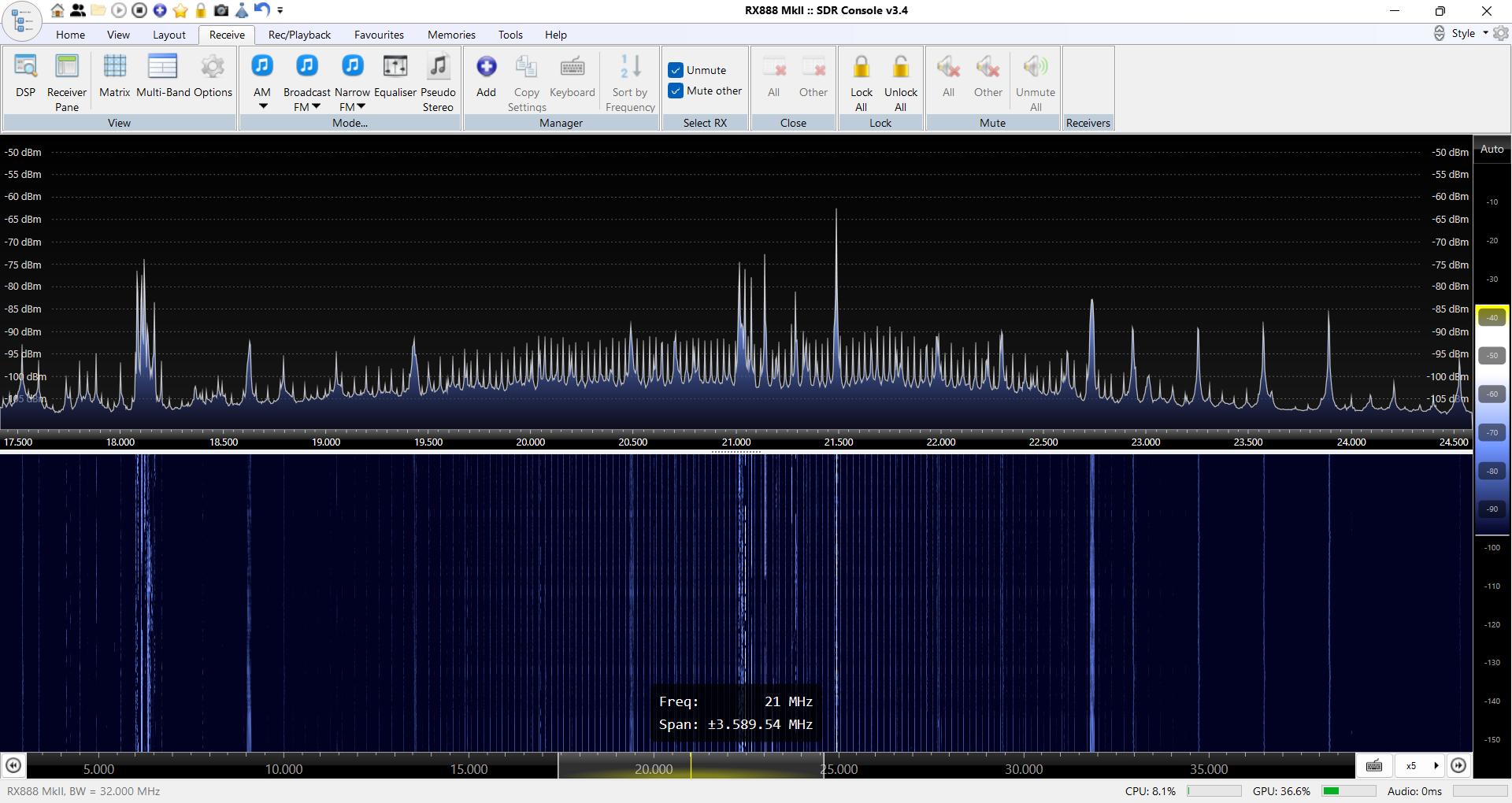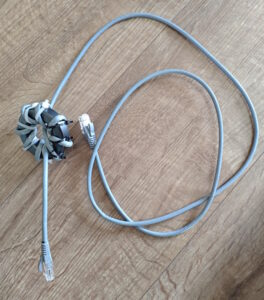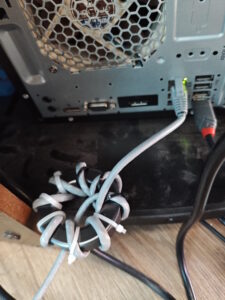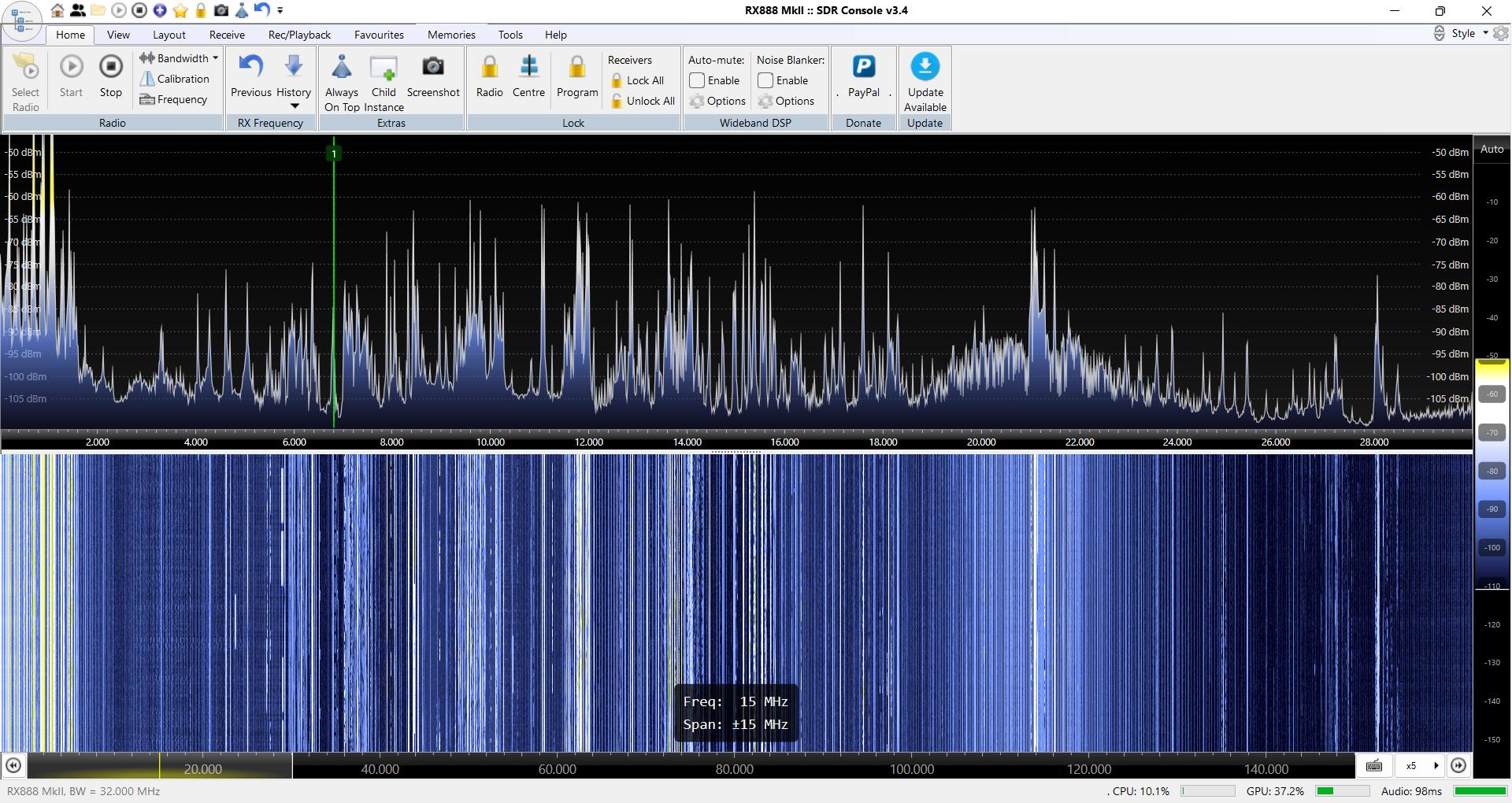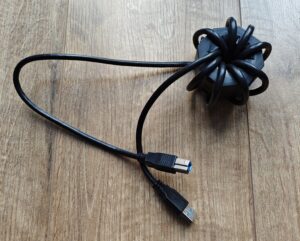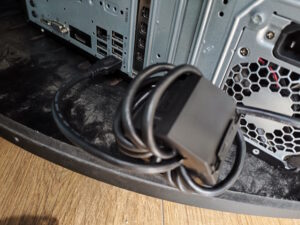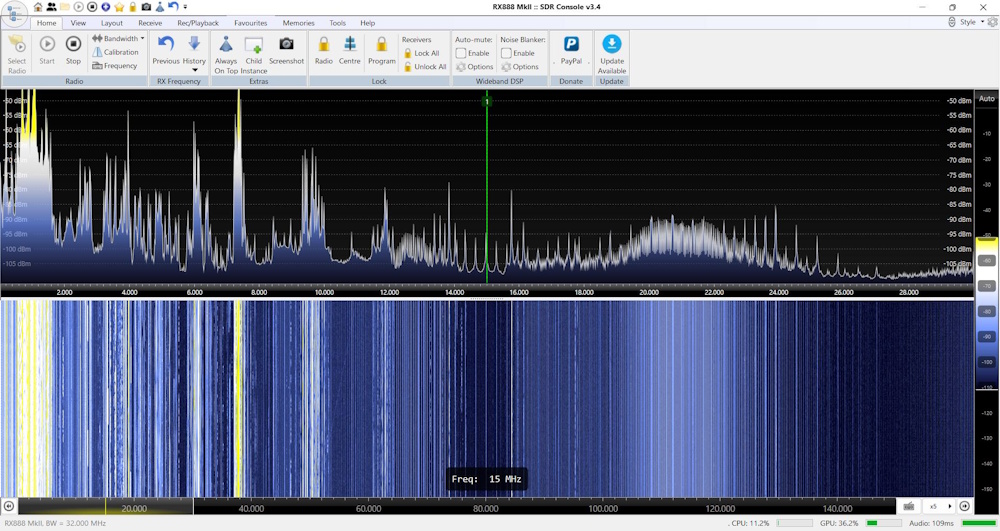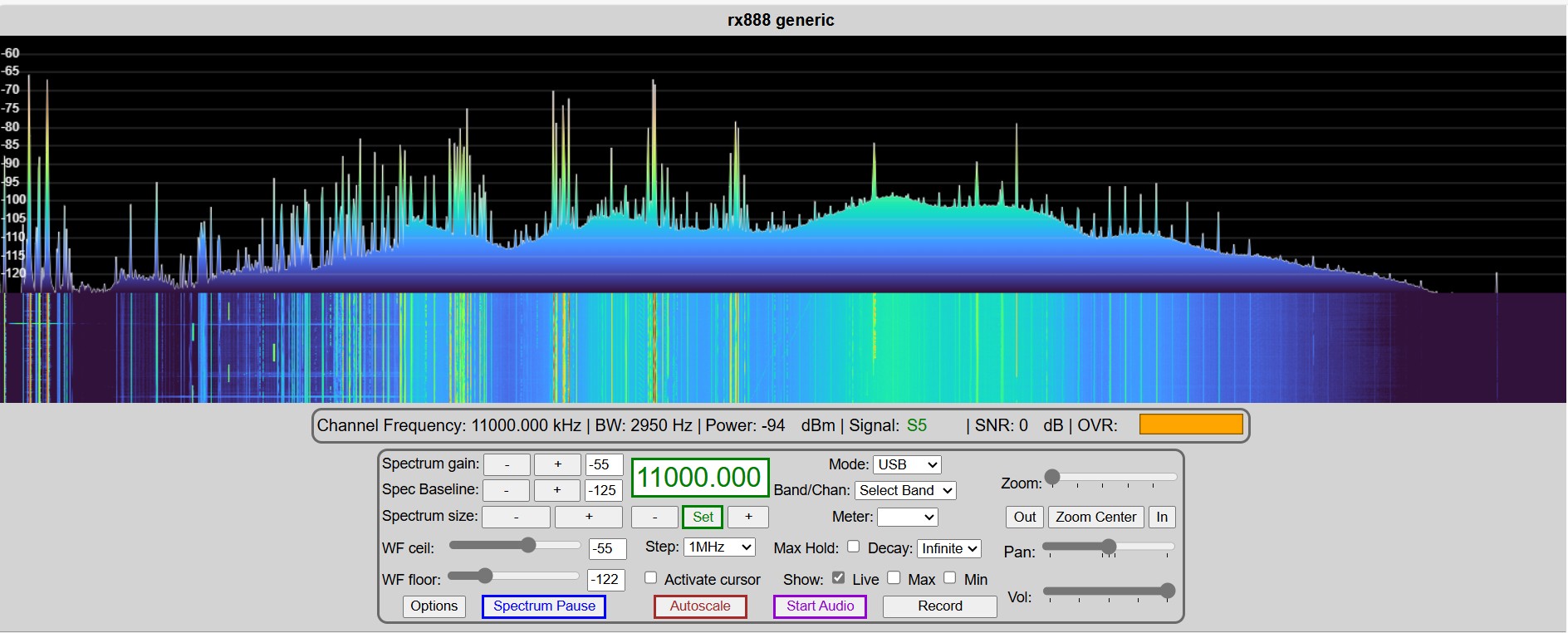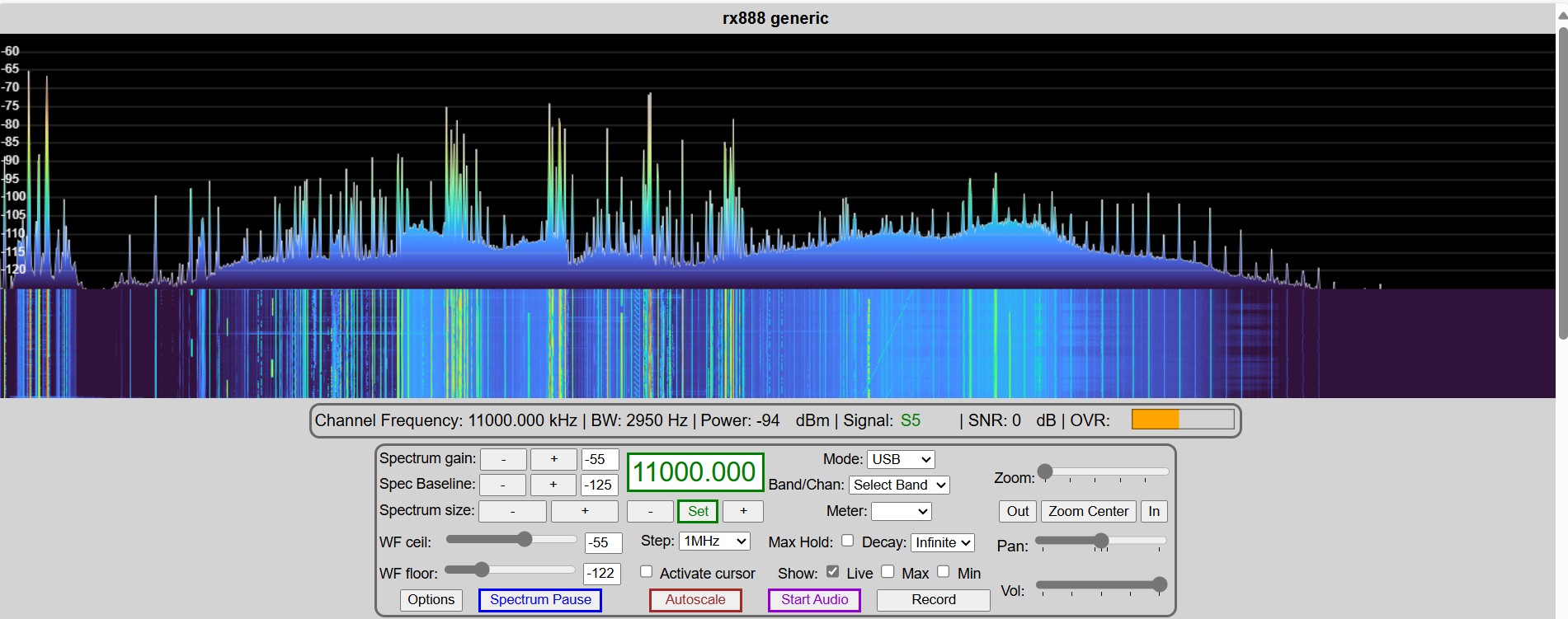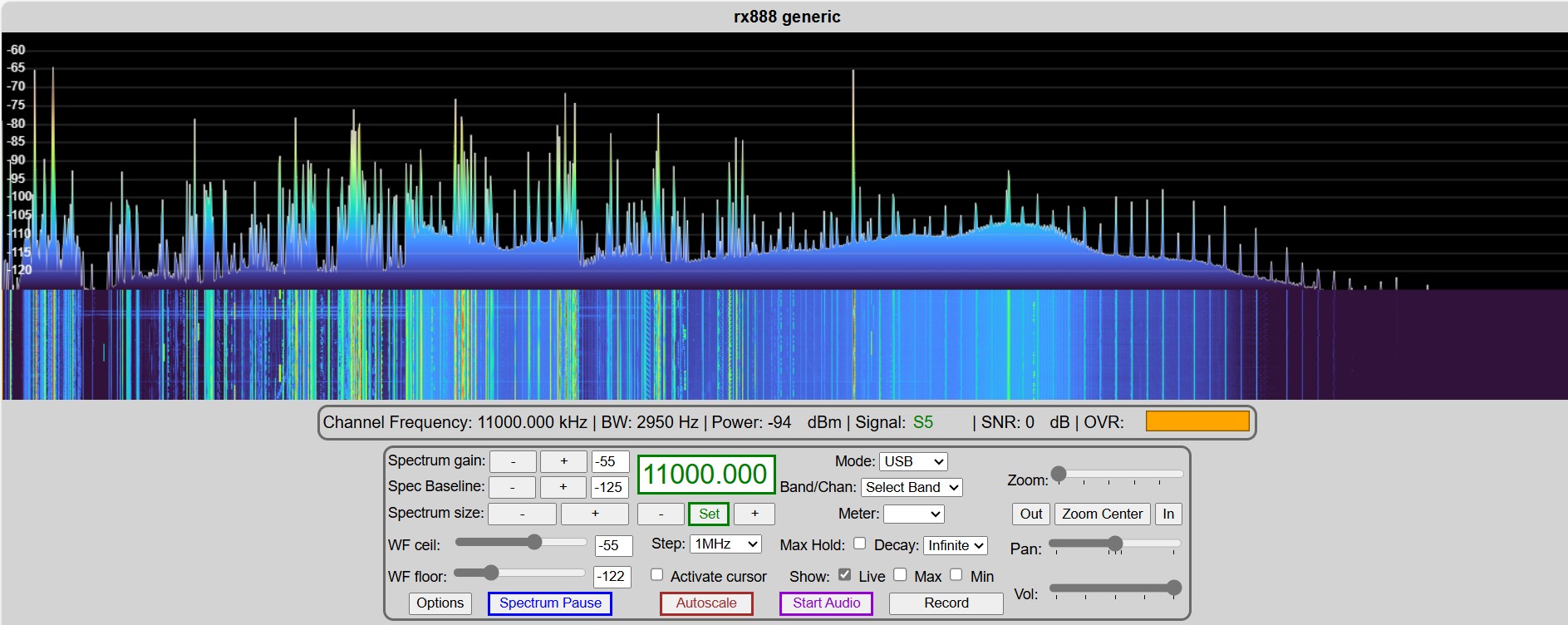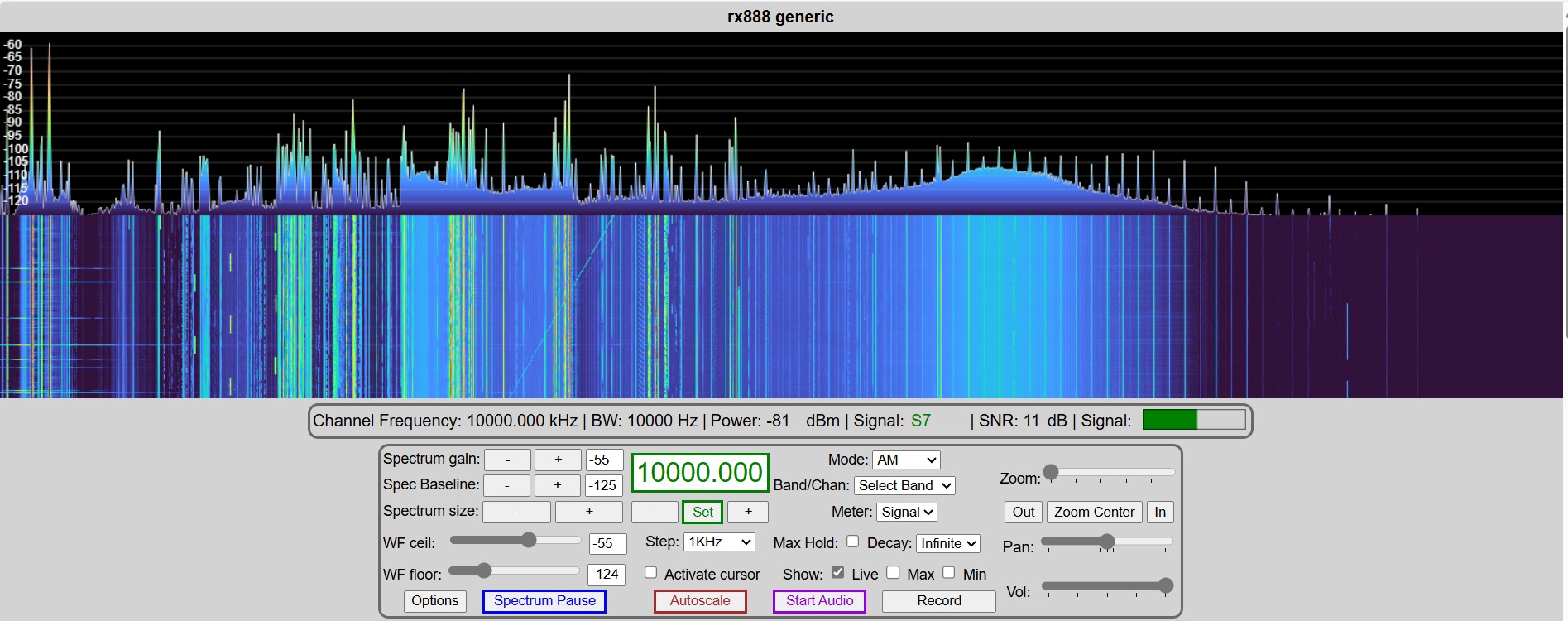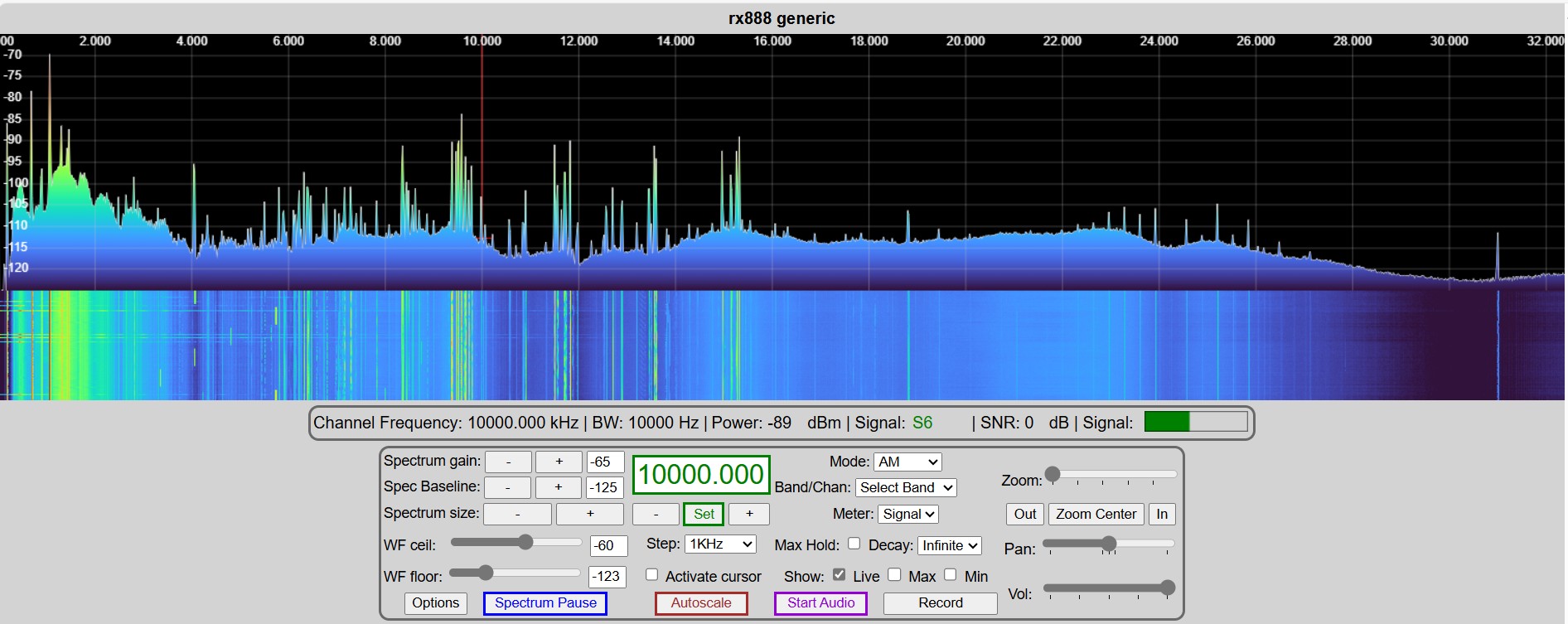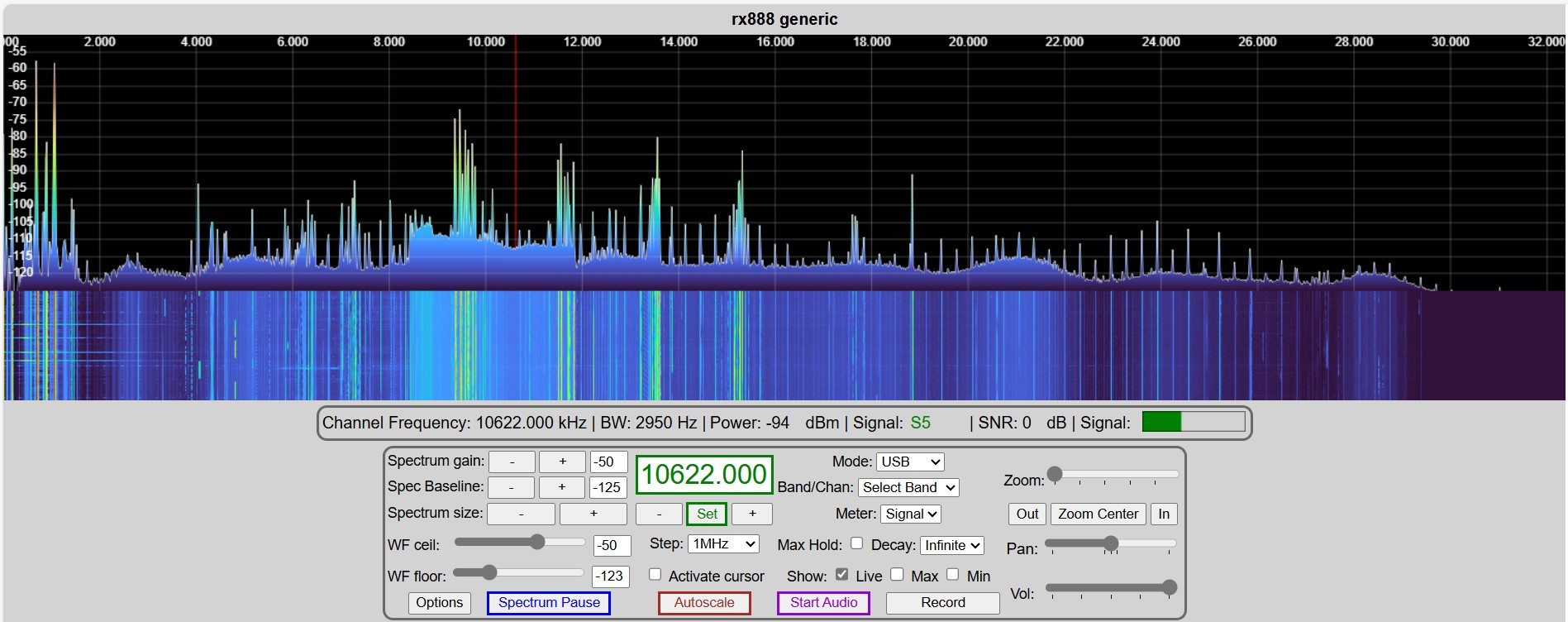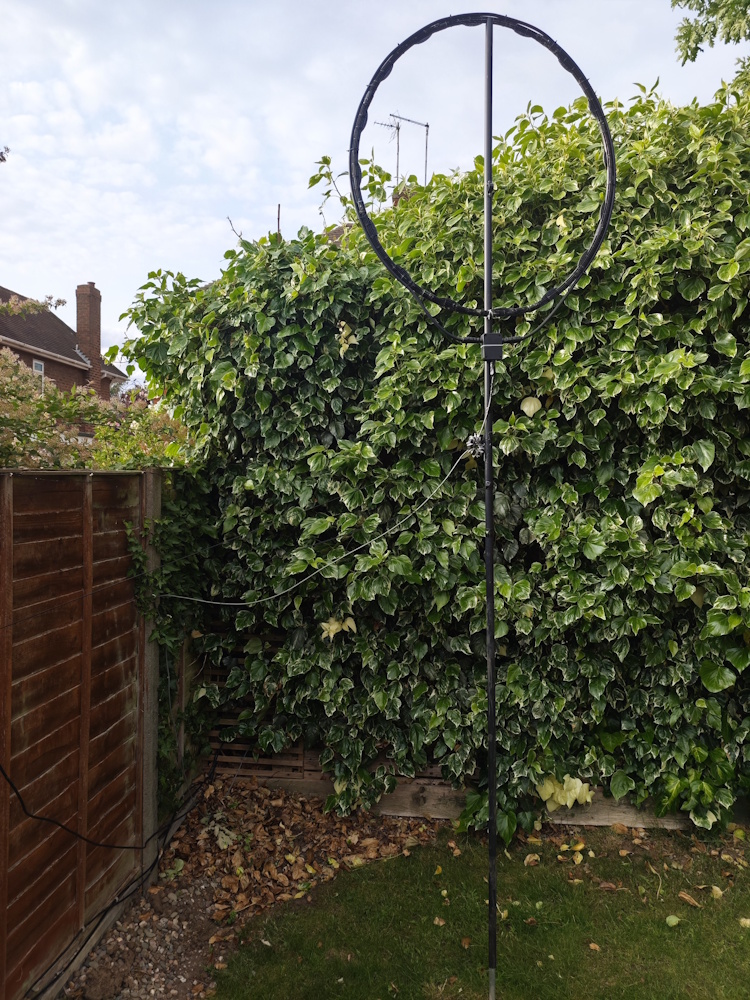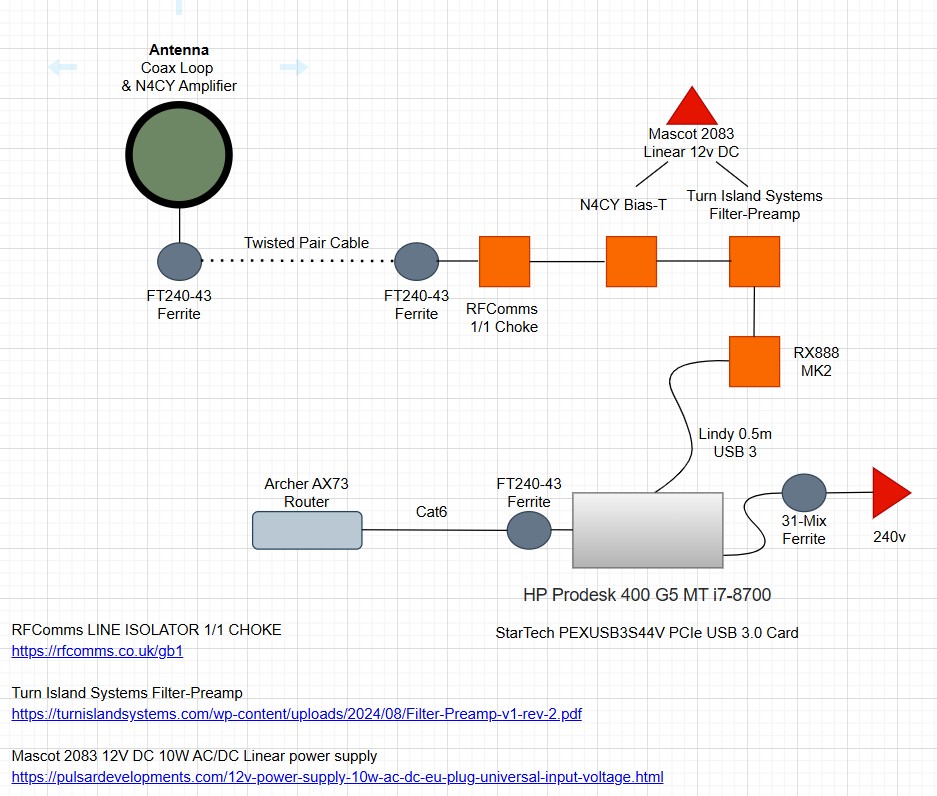Link to my RX-888 MKII Poject page www.airband-radio.co.uk/rx888
When the WellGood Loop was attached in 2024 there were 2 types of interference observed
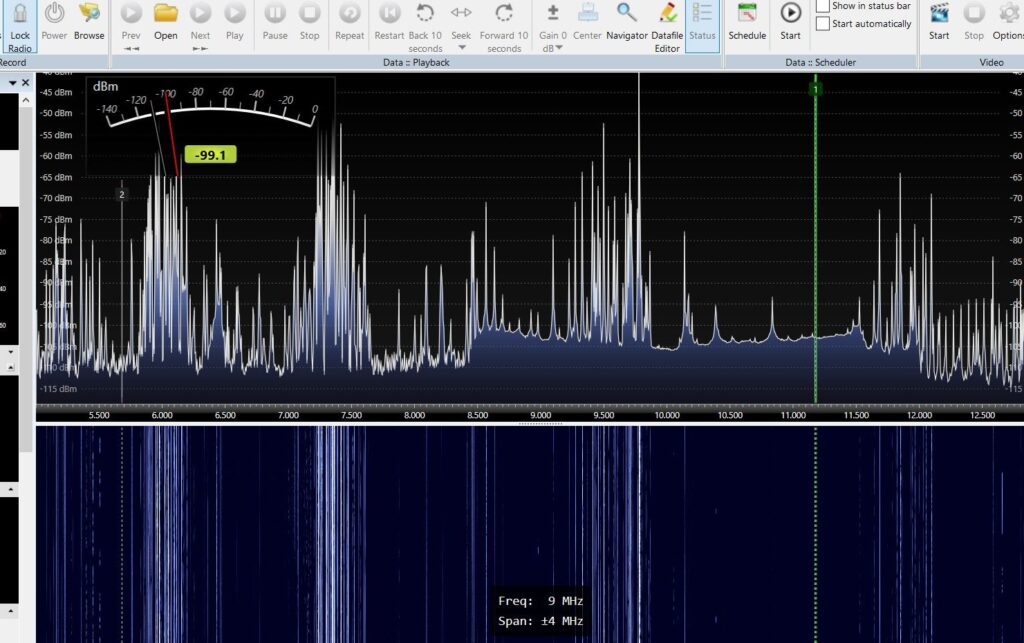
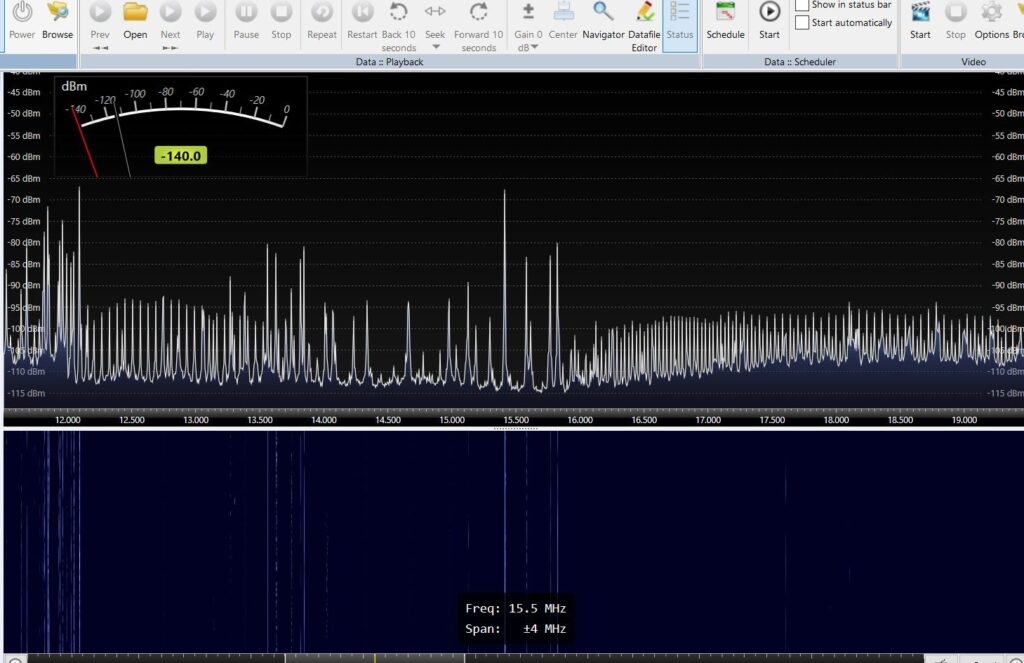
Both issues were identified in this video by John Rogers (M0JAV) EMF Chair at the RSGB https://www.youtube.com/watch?v=z-isgEyF_V4&t=1s
Issue 1: Appears to be VDSL band ‘U2’ which is 8.5MHz to 12MHz (20 mins into video)
More details about VDSL is detailed here https://rsgb.org/main/files/2019/01/EMC-Leaflet-15-VSDL-v2-January-2018.pdf )
Issue 2: Appears to be power supply / power line interference (33m26s into video)
18th January 2025
Reconnected the RX-888 MKII to the WellGood v4.1 Loop
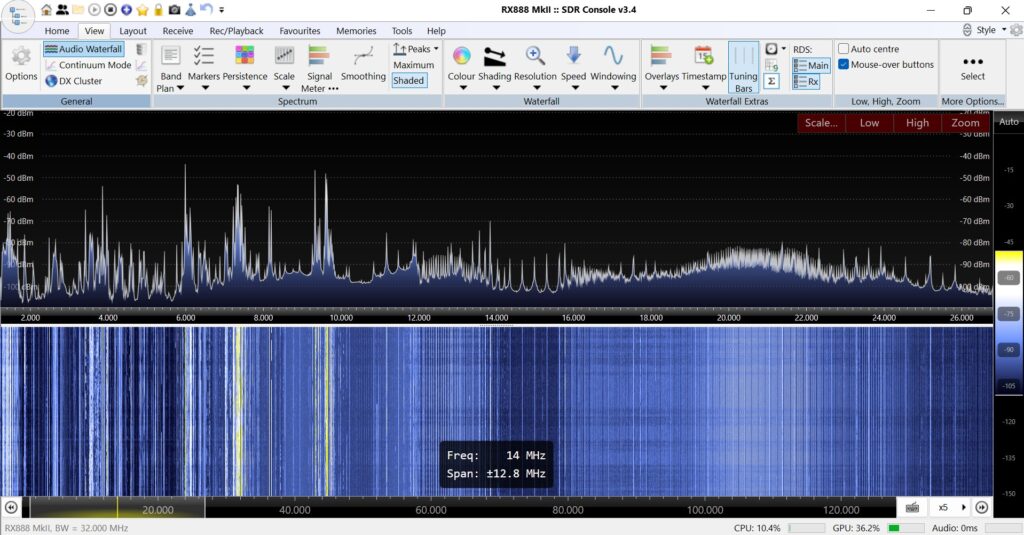
I recorded my screen when I turned on my TP-Link AX5400 router. Around 1m 55s into the video the noise levels jump – this was at the point where the router was establishing an internet connection https://www.youtube.com/watch?v=B-7ubJTUZus
19th January 2025
I turned off everything in the house apart from my HP Prodesk PC (with the RX888 attached), bias-t box & Filter-Preamp (both use the same PSU) and TV monitor.
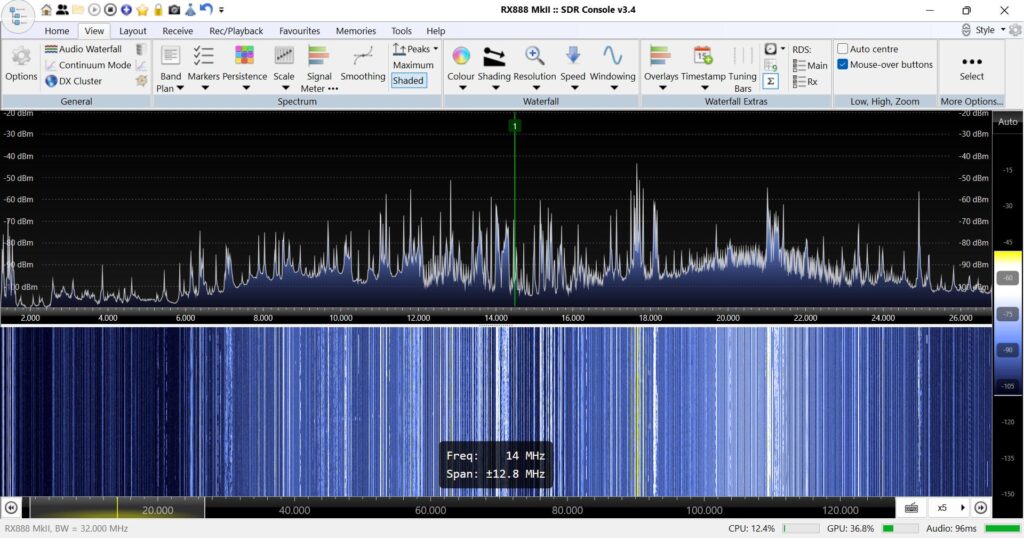
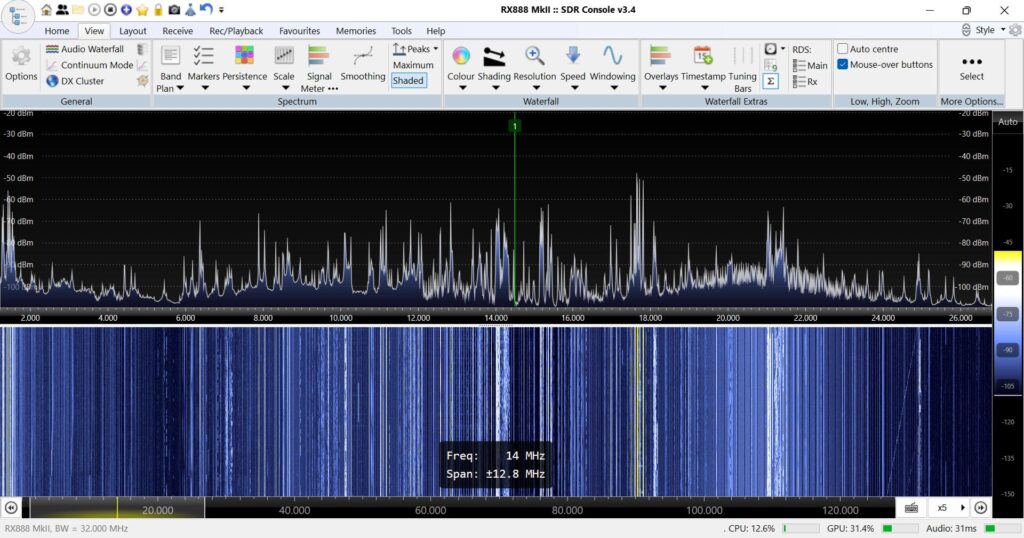
I noticed a significant noise increase when I connected the PC (with the RX888 attached) via an ethernet cable to the router. The noise mirrors what was seen on the video I linked to yesterday.
Summary: The first screenshot with nothing else turned on highlighted PSU spikes appearing. Perhaps caused by the computer PSU or the PSU used to power the bias-t & Filter-Preamp. The noise increase when connecting the ethernet cable to the computer could indicate poor shielding on the computer?
20th January 2025
I decided to test an SDRPlay RSP1A using the WellGood and Filter-Preamp. The RSP1A has a maximum of 10MHz bandwidth so I’ve taken a number of screenshots to show the full HF band. Interesting that image 1 with a centre frequency of 5MHz shows a lower noise floor, whereas image 2 shows the noise floor jumps up around 5.75MHz.
25th January 2025
Tested a Line Isolator 1/1 Choke made by G4ICD www.rfcomms.co.uk : https://www.ebay.co.uk/itm/235873493937
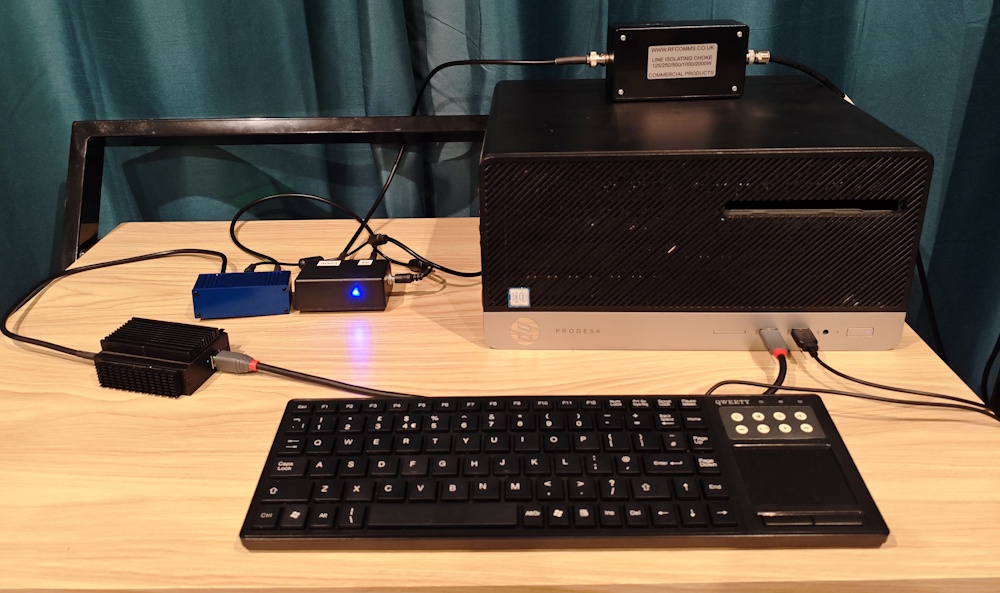
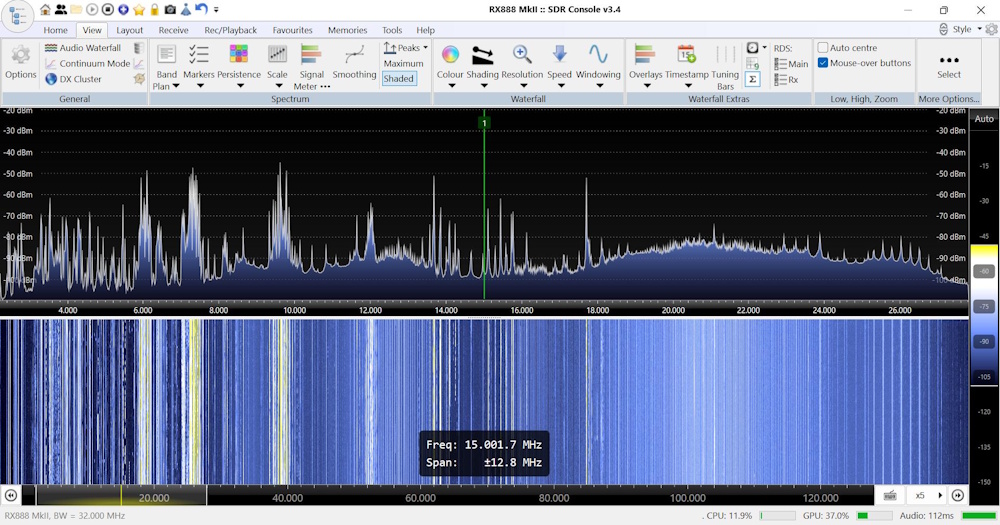
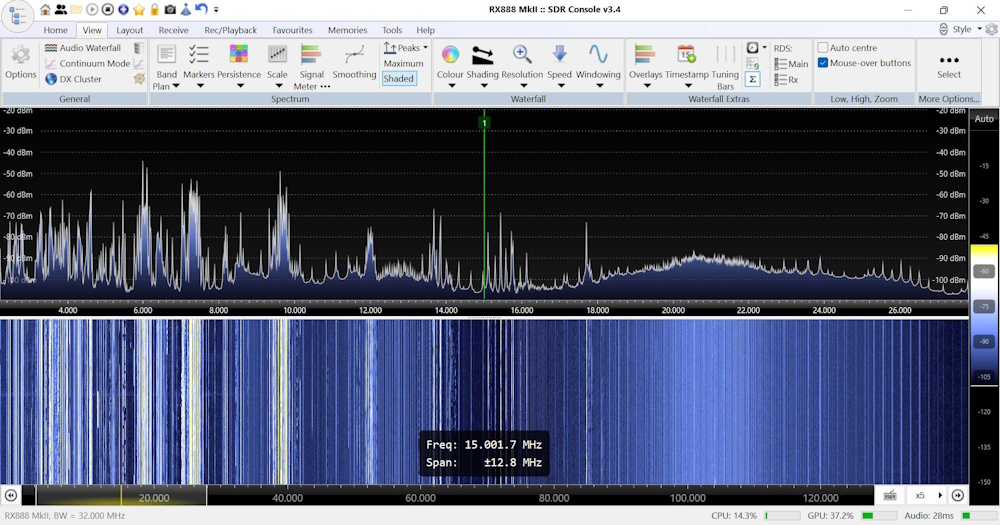
I can see no change in the RFI levels across the band with the Choke added
26th January 2025
Todays test was changing my Webro WF100 Coax to Pro-Power 8761 Equivalent twisted pair cable from the bias-t to the WellGood loop, using BNC to Screw Terminal Connectors.
The twisted pair cable has made a significant decrease to noise levels up to around 19MHz, after which there is still a large noise jump
Test with Volmets showing good signal strength and low noise floor (-105db)
1st February 2025
Today’s test was to see whether any of the interference is caused by the power supply connected to the bias-t box. For this I tested a PP3 9v battery connected via a DC 2.1mm x 5.5mm Jack Plug adapter.
There was no noticeable change evident.
The PSU I’m now using for the bias-t is a Mascot 2083 12v linear regulated AC/DC power supply. It was one of the few 12v linear regulated power supplies I could find for use in the UK.
2nd February 2025
I decided to use AI to help analyse my interference issues. I chose the Google AI platform Gemini
I uploaded a screenshot showing interference from around 19MHz to 23MHz
Gemini said: This is likely power line interference. This type of interference occurs when electrical noise from the power grid couples into the SDR receiver.
Here are some ways to prevent power supply interference:
Power Line Filtering:
- Line Filters: Use a power line filter (also known as an EMI filter or noise filter) between the wall outlet and your SDR’s power supply. These filters are designed to attenuate high-frequency noise that can be picked up by the power lines.
- Ferrite Beads: Place ferrite beads on the power cables of your SDR and any other devices connected to the same power strip. Ferrite beads help to suppress high-frequency noise on the cables.
I asked Gemini which Ferrite is best for 19MHz and it informed me: Fair-Rite mix 43 is likely the most suitable ferrite material. While mix 31 is a good general-purpose HF ferrite, it’s generally more effective for frequencies below 10 MHz
Based on that response I ordered a FT240-43 from Qubits
Earlier investigations identified the ethernet connection from my computer to router as being a cause of interference. I decided to wrap an Excel Cat5E UTP Cable around the FT240-43 (8 turns) to see if it made any difference.
Using SDR Console I checked the HF band but no noticeable reduction in noise can be seen.
I also asked Gemini what the best shielded Cat6a ethernet cable is for reducing EMI. The response was: ‘S/FTP (Shielded and Foiled Twisted Pair) construction’. I have now replaced all my other ethernet patch cables with these Excel Cat6a SFTP cables. The cable is quite thick and rigid, which makes wrapping it around a ferrite more difficult than the Cat5E cable.
6th February 2025
Today I tested a 31-Mix Snap-On Ferrite (also known as the ‘Problem Solver’) which I purchased from https://www.hamgoodies.co.uk/problem-solver-ferrite
I used the USB 3 cable which came with the RX-888 MKII and wrapped it around the Ferrite (8 turns). These larger Ferrites make it much easier to wrap cable around
I didn’t notice any obvious change but I do think it’s a good idea to shield the USB cable from the RX-888 MKII to the PC as it’s one of the connections which can cause interference.
** On Bluesky a post appeared from ‘TheOperator’ showing a similar noise jump peaking around 21MHz when using a WellGood v4.1 https://bsky.app/profile/hb9vqq.bsky.social/post/3lhjjf7i6sk2d George M1GEO the producer of the WellGood loop is going to take a look at the raised noise floor **
May 2025
I have moved to Ubuntu, using software called ka9q-radio https://github.com/ka9q/ka9q-radio
Spectrum using coax from the Wellgood
Spectrum using twisted pair cable – you can see the reduction in interference
I changed the Cat5 to Cat6 cable between the router and PC, wrapping it around the FT240-43. There is a noticeable drop in noise towards the lower end of the HF band
Next I rotated the Wellgood loop to get the lowest noise floor possible. This has improved the noise floor at the mid range of the HF band
Long Wire
I decided to connect a 64:1 Unun fed by a 100ft long wire – this connects directly to the choke which is connected to the RX888. Interestingly the VDSL interference from 8.5MHz to 12MHz isn’t notcieable and a noise drop off occurs around 10MHz
June 2025
The display with an N4CY loop attached – the noise jump from 19MHz is no longer there suggesting it’s a characteristic of the Wellgood
This is my current setup
Next steps
Mains power line filtering using a GM3SEK Mains Filter
Material 75 ferrites to be placed on all power leads in the house Fair-Rite
Thermal mods to the RX888 to allow for 24/7 monitoring
Grounding options?
Phasing options – Using 2 antennas: Primary antenna and a noise-sensing antenna. DX Engineering NCC-2 is an example of a phasing unit
USB 3 Isolator – USB 3.2 Gen 1 Isolation Adapter with 3KV isolation | EX-1452IS
Double loop for the N4CY
Compare with a Datong AD370 Active Antenna
———————————————————————————————–
Improvements made by VK7JJ
- Linear Power Supplies
- Mains EMI filter: Two stage EMI filter placed in metal case has outlets for all mains powered computers eBay
- Ethernet: Leads attach to the router via HF EMI toroids with 6 or so windings of flat ethernet cable (no clip on ferrites)
———————————————————————————————–
